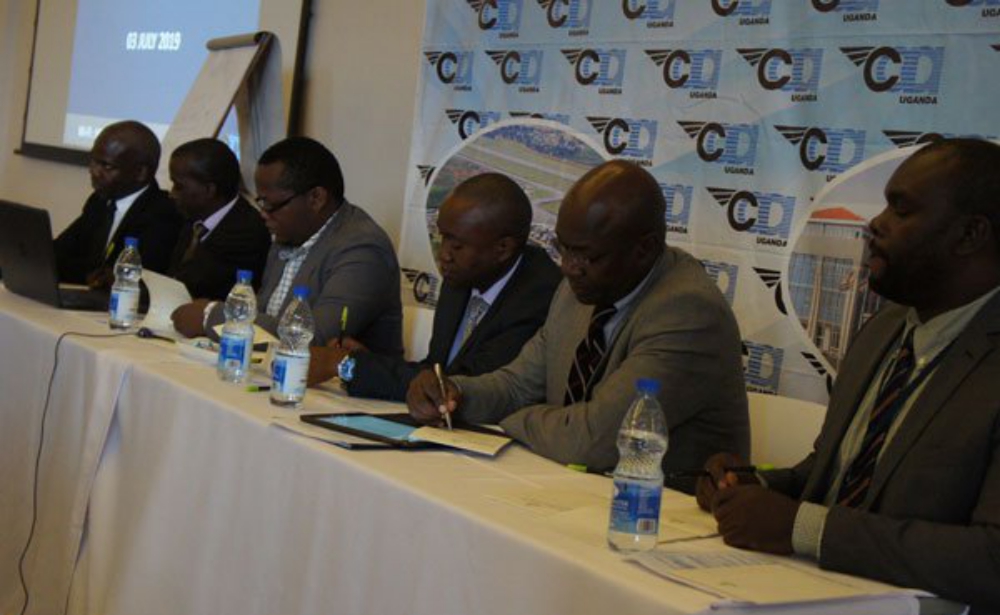
The Uganda Civil Aviation Authority, UCC and Customs officials during the sensitization workshop on Drones at Mestil Hotel in Kampala on July 3, 2019
At least 251 drones are held at Entebbe International Airport, pending clearance.nThe Ag. manager Customs, URA, Entebbe Airport Armstrong Turyakira says, 442 drones were brought into the country in the 2018/19 financial year and only 191 were registered.
“An average of four drones enter the country every day but many are still held at the Customs department for scrutiny because they are deemed to be a threat to National Security,” he said.
A Drone is an unmanned aircraft. They are mostly used in Uganda for photo and videography, surveillance and intelligence gathering. In some areas, drones are used to deliver goods and services to different people.
However, despite the availability of laws by the International Civil Aviation Organization, the use of drones and regulations in individual countries is left for the different state organs to handle. Uganda has not yet drafted any policy regulating the use of drones.
Ronald Gidudu, the Airworthiness inspector says Uganda’s regulations have not yet been promulgated as they were not addressing all the significant operation monitoring concerns.
“State regulations on drones are based on the international civil Aviation Organization (ICAO) annexes issued from time to time. Uganda is currently drafting our own in consultation with stake holders including (Civil Aviation Safety and Security Oversight Agency (CASSOA),” he said.
Gidudu says there’s need is to establish a constant information exchange between states, industry and other stakeholders. Uganda CAA is Responsible for controlling Uganda Airspace for Civil aircraft operations including drones.
Procedures of clearance at Entebbe
Upon arrival at the airport, drones are declared to customs and security (invoice, origin and any other accompanying document). Customs deposit notices are issued to the bearer.
Bearers/owners are then briefed on the clearance procedures; including Security authorization from Security Tripartite Committee on Drones Acquisition and Usage.
Currently, the Civil Aviation Authority-CAA has earmarked areas acting as no-fly zones for drones in the country. They include State House – Entebbe, State house – Kampala, Entebbe International Airport, and the Presidential Ranch in Gomba.
Other places include dams and water bodies where the Remote Piloted Aircraft systems are expected to only fly at the lowest and Highest Altitudes. Other places include Packwach, Jinja and Karuma bridges.
Photo: Eve Muganga
Source: Daily Monitor
